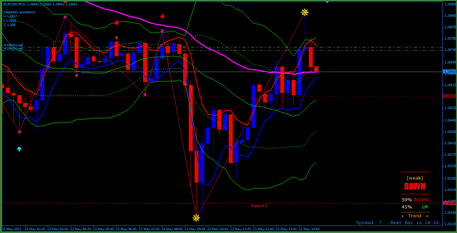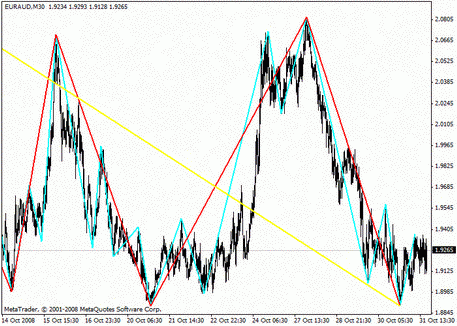
Gap on Forex - Features of the Gap Trading
Wednesday, 26 July 2017 18:09
Gap is the rift between the closing price of the previous candle, and the opening price of the next one. There are two types of gaps:
- Weekly gap. This type is relatively common. There is a lot of pending orders left on the exchange during the interbank days. All the orders are activated on Monday. For such a reason, a jump is formed on the chart, representing the difference between the closing price of Friday and the opening price of Monday.
- Intraday gap. A rare type of gap that appears as a result of the traders’ reaction to the important news, or other fundamental factors. It’s often impossible to predict such a type of gaps, so we won’t consider them.

A lot of market participants use gaps as part of the trading strategy. Of course, they cannot be the basis for the Forex trading, but if you study the basic principles of their formation on the chart, you can get much profit. In this case, gaps provide a high probability of the successful transactions, and allow the trader to use a fixed stop loss orders.
Trading on Gaps
To enter the market using gaps, traders have identified different tendencies that are worth considering.
First of all, the success of such a transaction depends on whether the gap is closed. A closed gap is the return of the asset value to the original point, which preceded the gap formation. The fact is that there are stop orders set in the pending transactions, and they are located near the closing price of Friday. Market makers trigger them, knocking out the traders from the market, and the price comes back. The success of most gap strategies depends on this.
According to statistics, about 70 percent of the gaps close. But this figure isn’t right for all the currency pairs. It’s better to use EUR/USD, GBP/USD, EUR/JPY, and GBP/JPY pairs. At the same time, the EUR/USD pair closes less often than others (66% probability). As for the time frame, we recommend using the M30. According to statistics, the graph continues to move toward the jump during the first 30 minutes after the gap appeared.
When you’ve chosen the currency pair, look at the width of the gap - it should be at least 20 points. Too small gaps are not suitable for profitable positions opening.
So, wait until the first candle closes on the chart. As soon as this happens, open the order. To find out the best place for the take profit, find the maximum (or minimum) of the last candle on Friday. Set the take profit a little higher.
Then set the stop loss. On the one hand, it’s necessary to preserve the profitability of the transaction, on the other hand - to prevent the stop loss triggering by the small fluctuations. To make this right, take the take profit level in points, and multiply it by 1.5. If necessary, the result can be rounded up, leaving the price more space for fluctuations. When the gap is about to close, there are often a lot of fluctuations on the price chart. This is due to the fact that a lot of traders are trading at such points, and the market makers are trying to knock out their stop losses.
If you made the calculations correctly, the price won’t reach the stop-loss, moving in the direction of the jump, and then will close at the take-profit level.
Features of the Gap Strategies
Of course, such a type of trade has its drawbacks. The first one, and the main one, is that jumps are quite rare. Don’t expect that every Monday will start with a jump of more than 20 points, bringing you a big profit.
Secondly, some gaps don’t close. If you track the price chart, for example, for six months - you will surely see the unclosed gaps on it. This is a risk, but any operations on the foreign exchange market involve a risk probability.
However, if the gap doesn’t close within a half an hour, or more – don’t panic. Some breaks close quickly while for the others, it takes hours, or even days. The fact is that the price jump can be supported by a new, strong trend. For such cases, the trader should have a quite strong deposit.
Share
Related articles
- Previous article: Day Forex Strategy - The Schrodinger’s Cat
- Next article: Diary of a Trader - Features of Keeping

 English
English
 русский
русский



